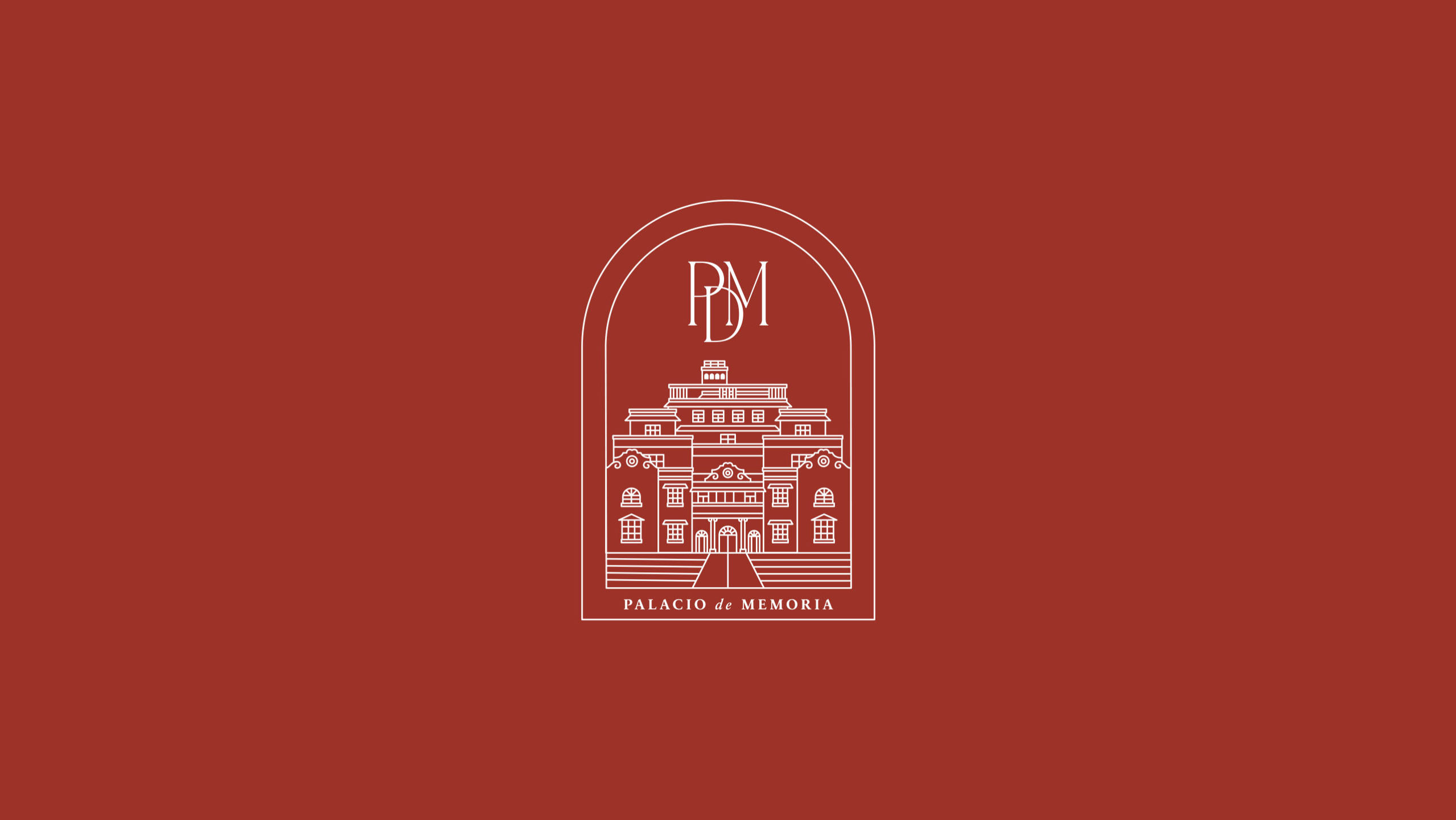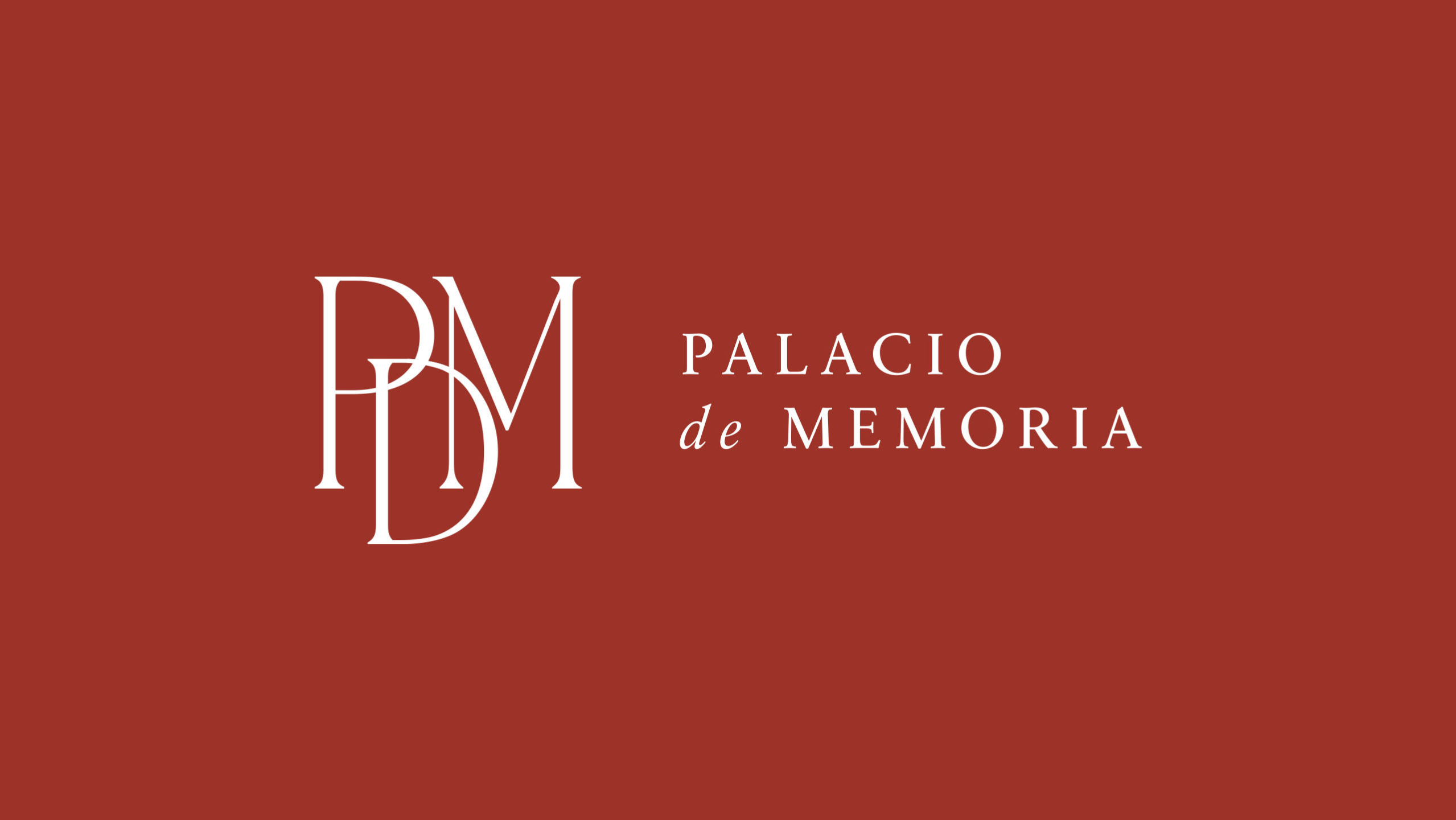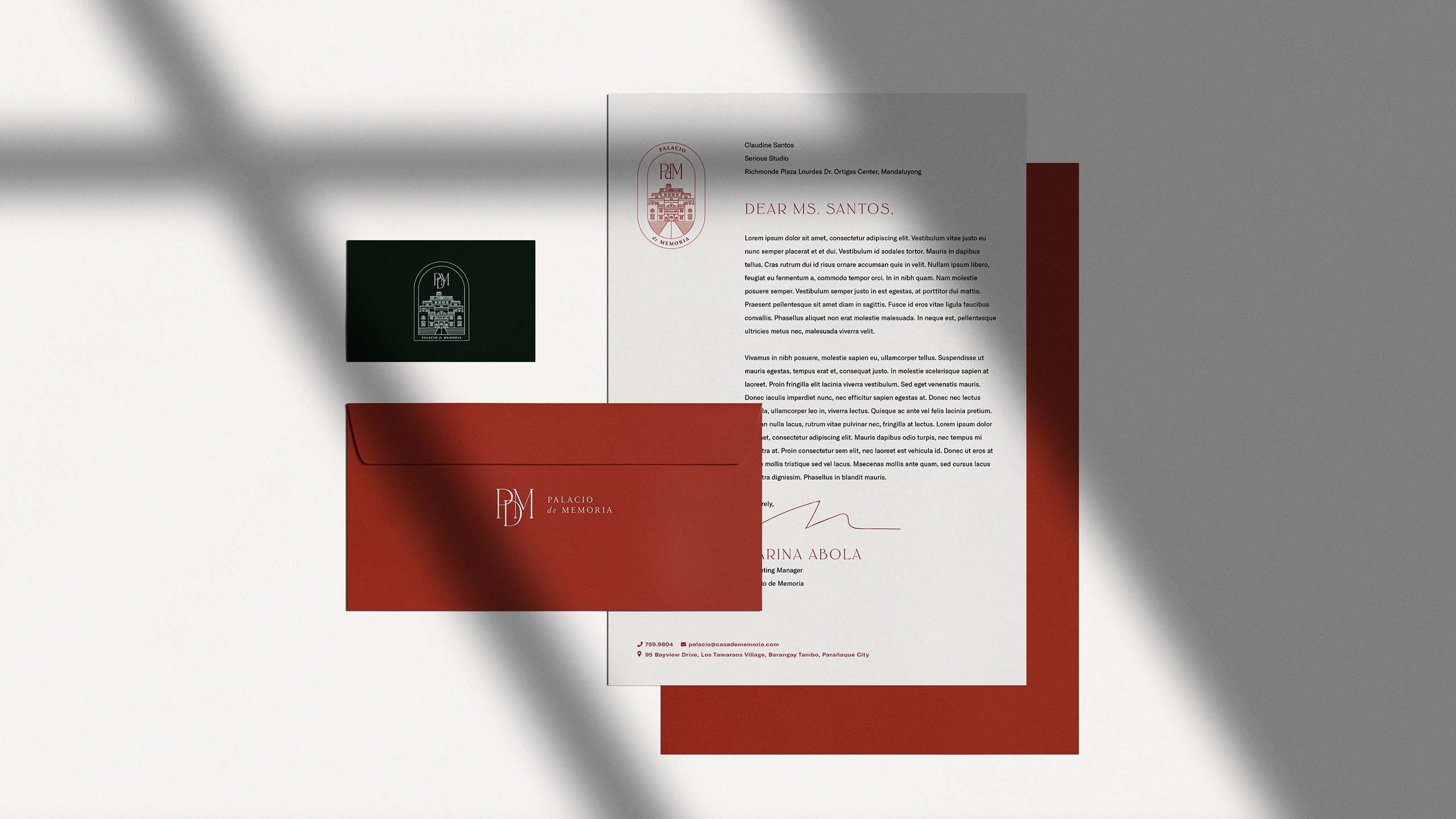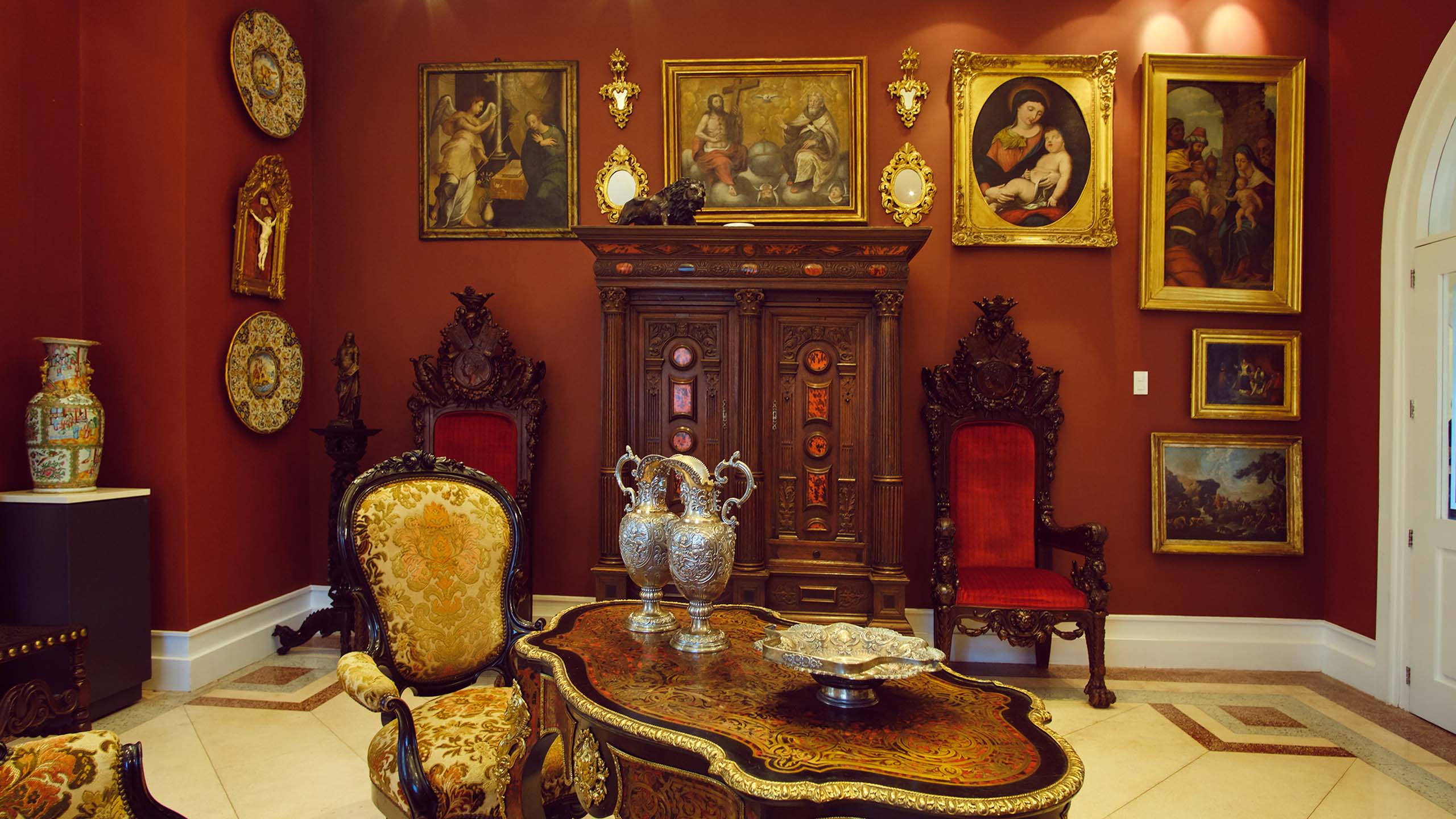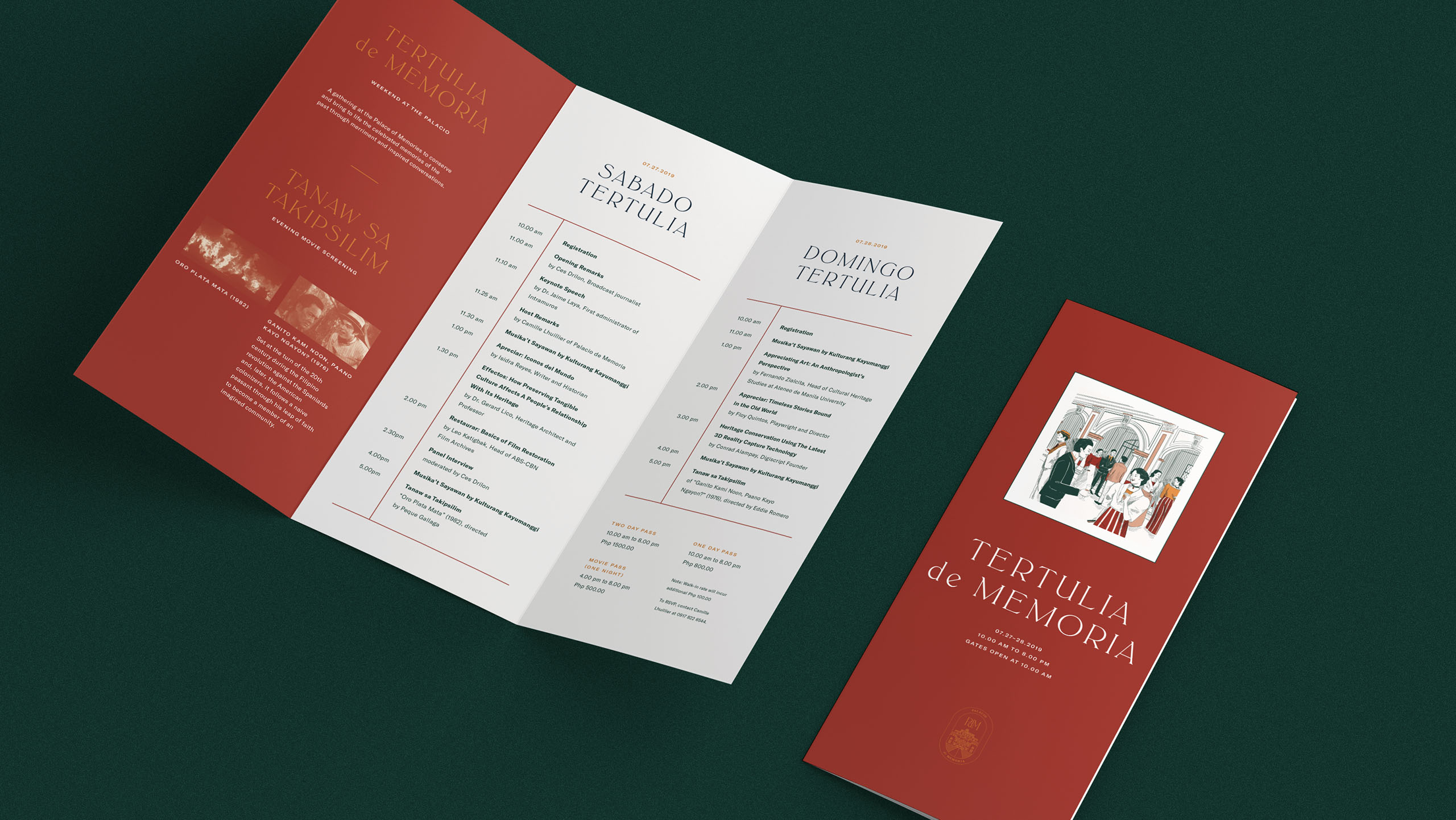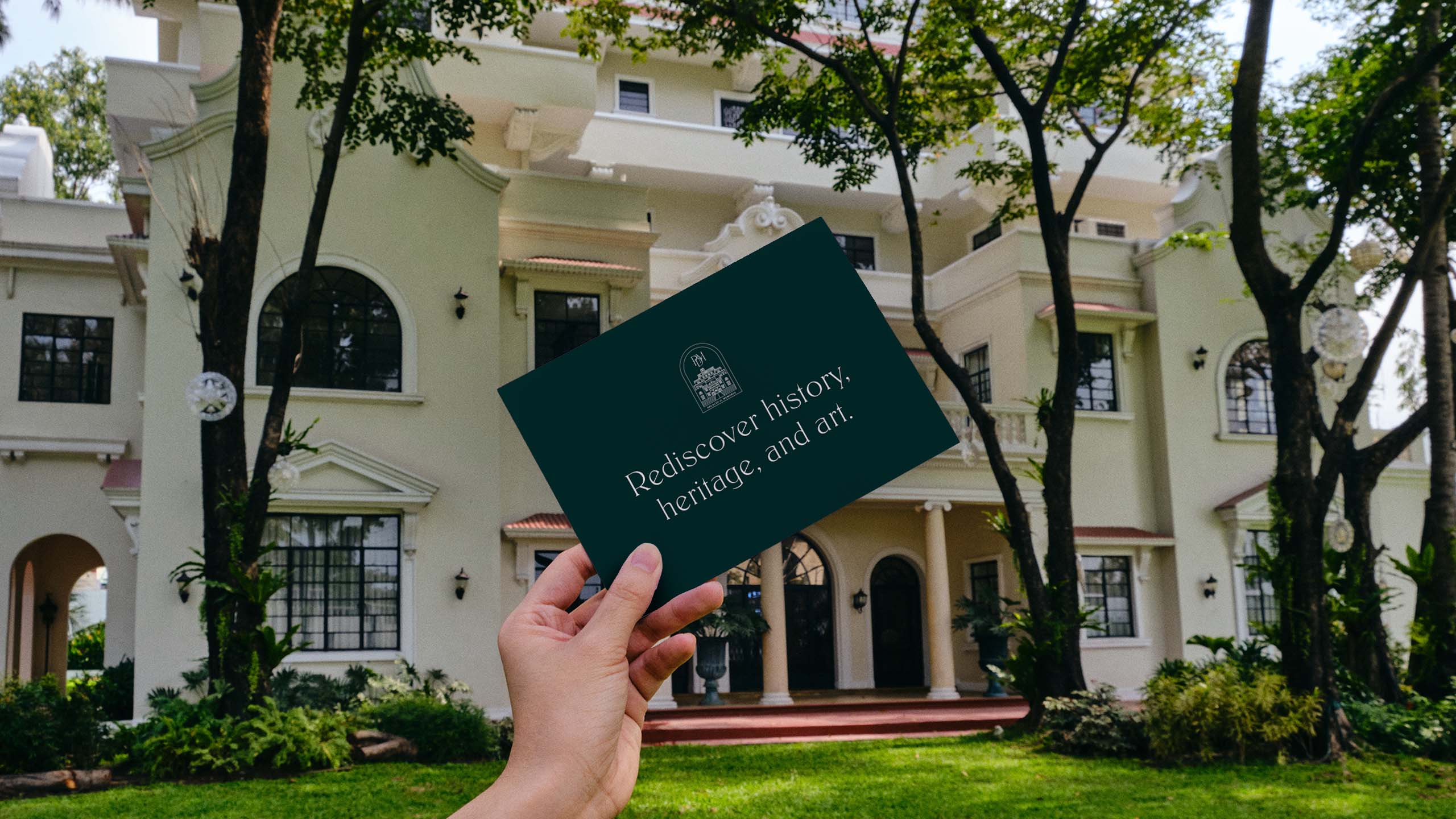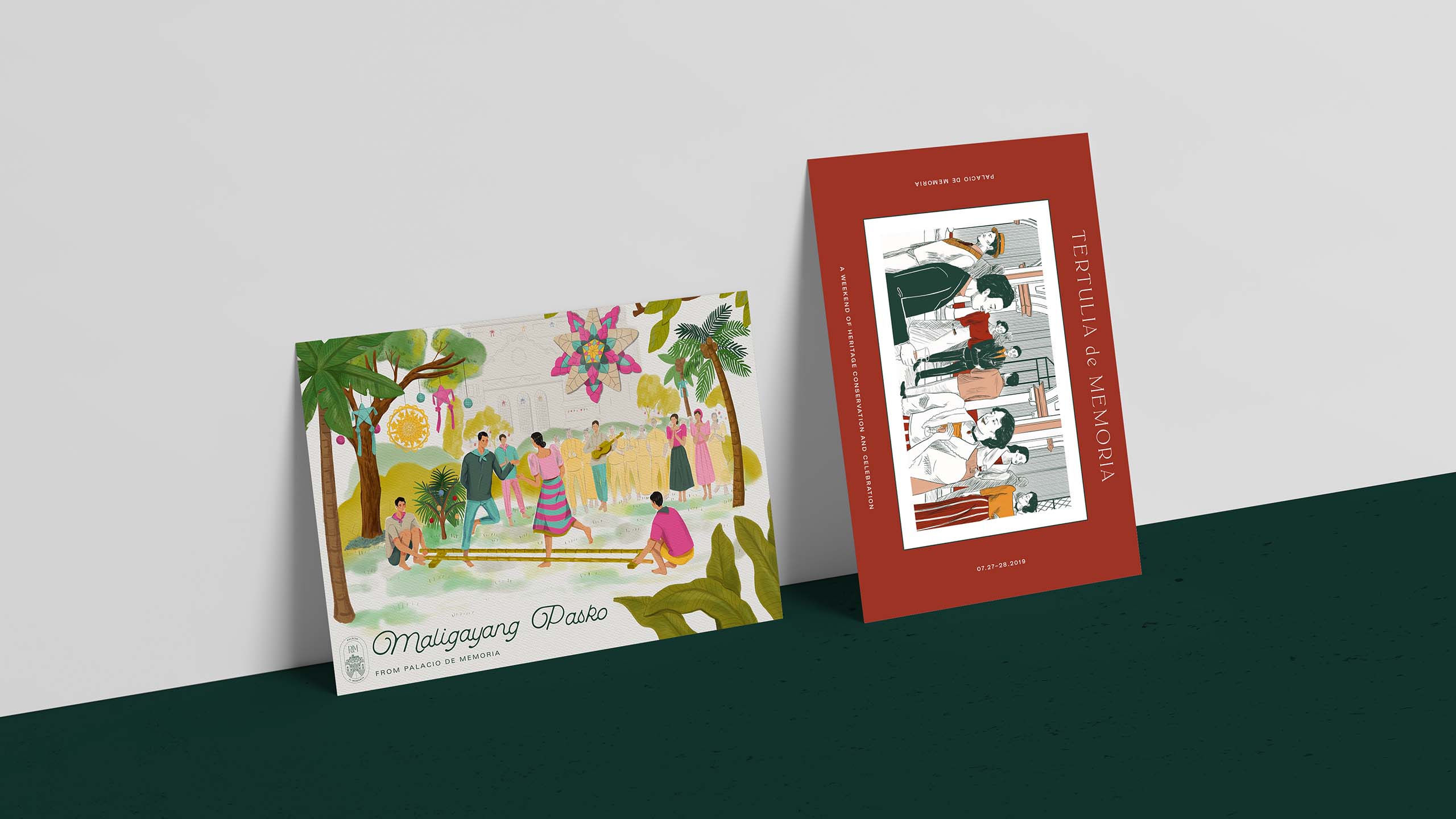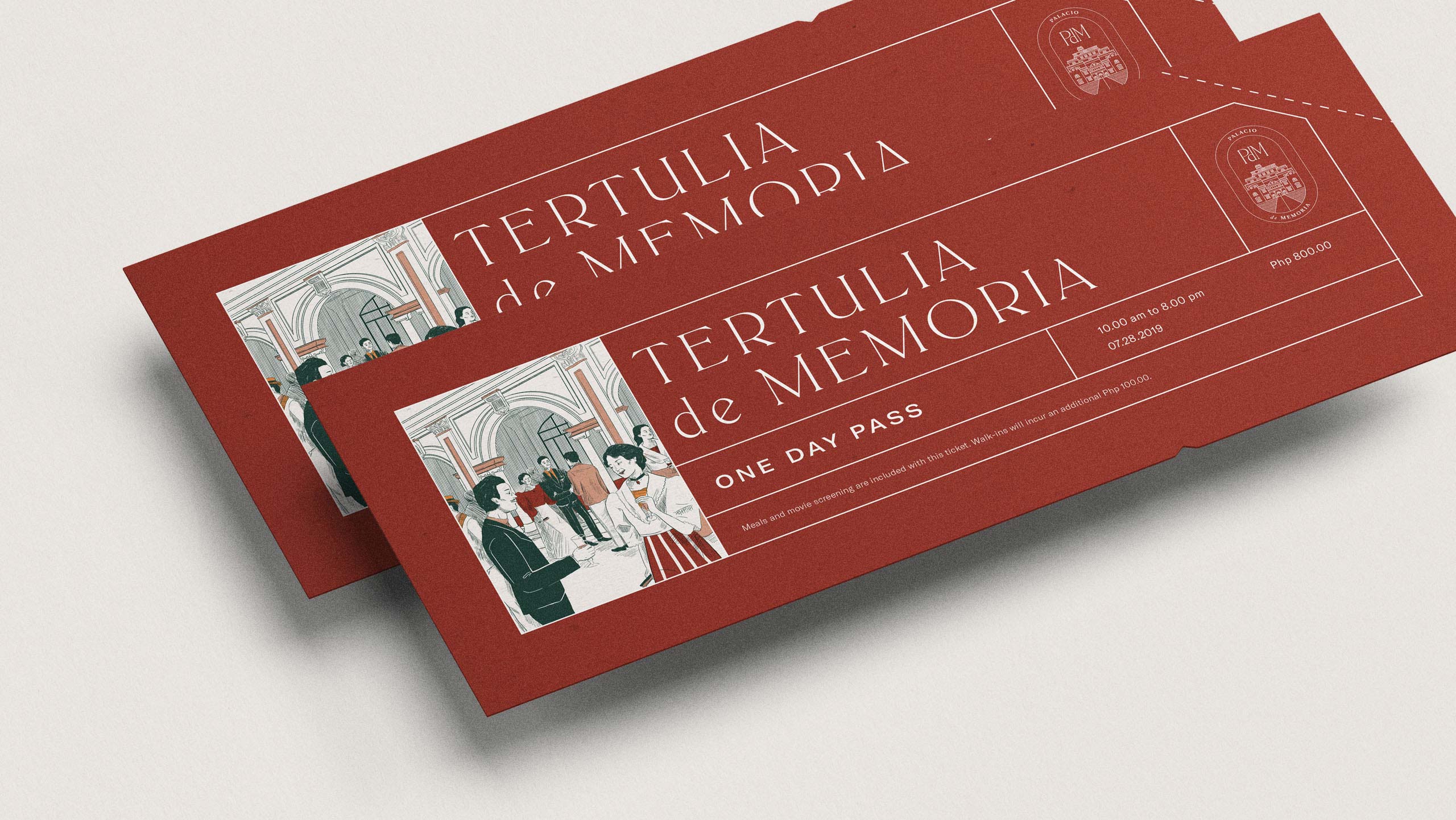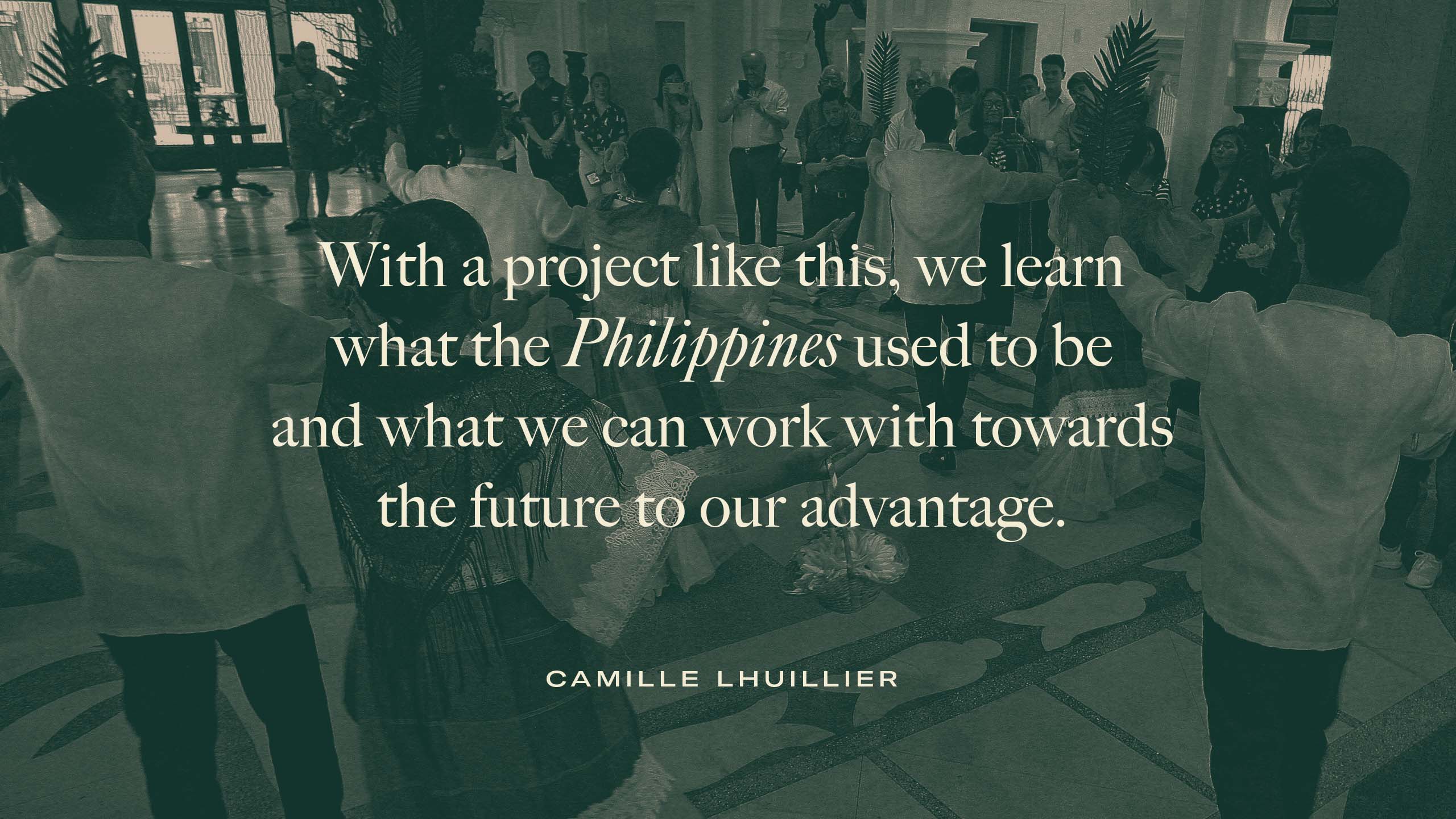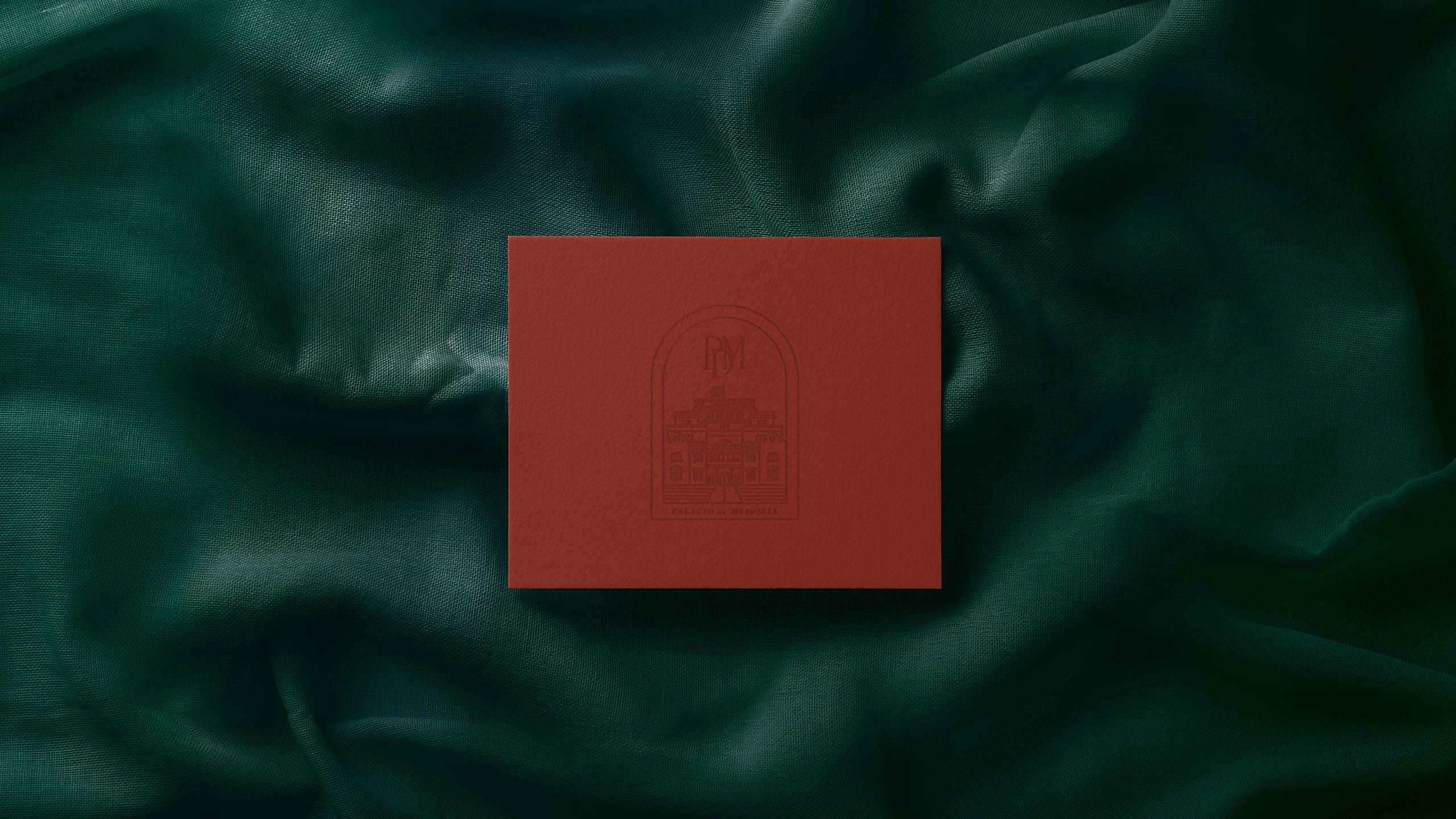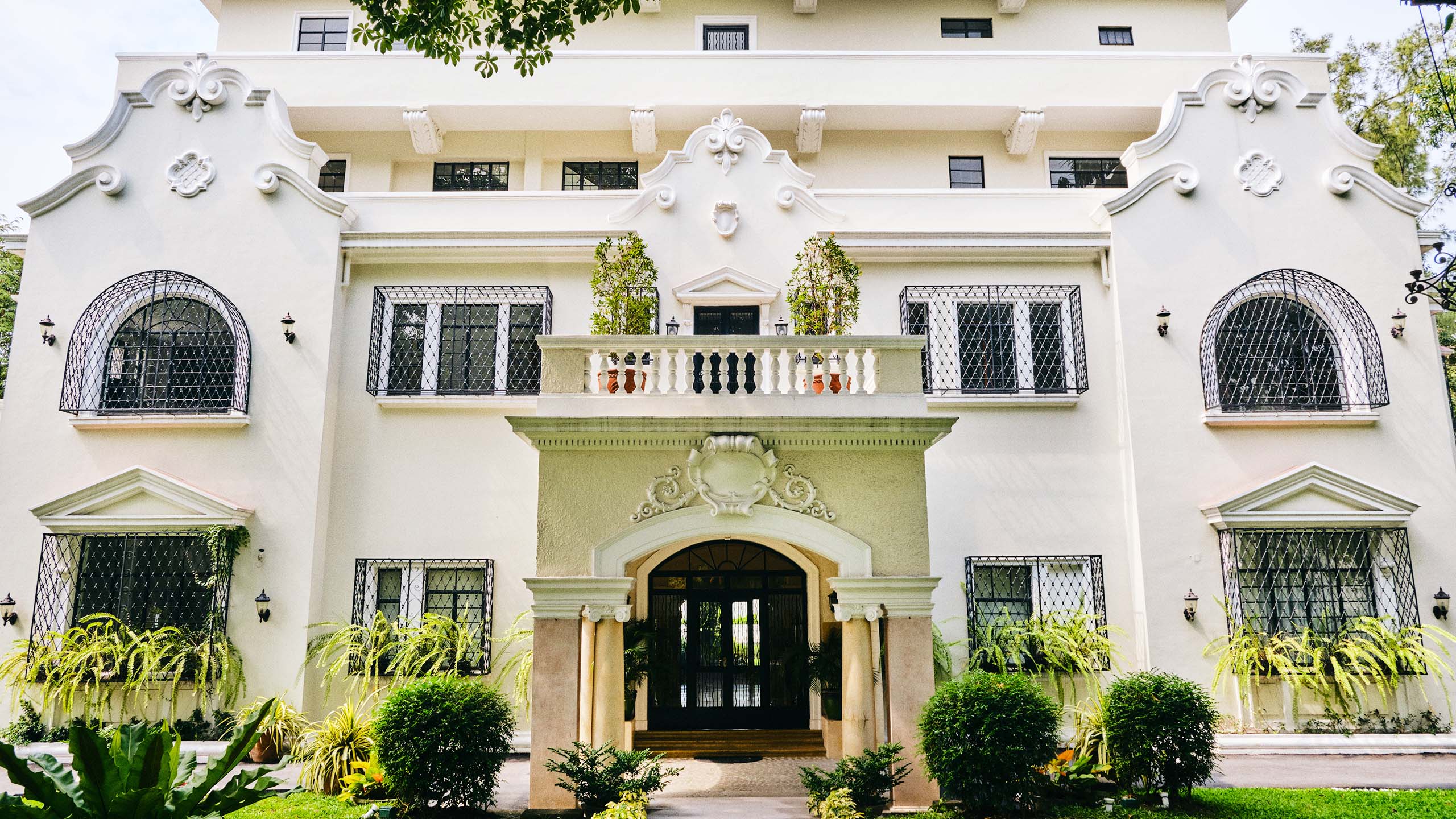
PALACIO DE MEMORIA PHILIPPINES BRANDING
A Celebration of
Memories
BRANDING SCOPE
Brand Strategy
Brand Identity
Wayfinding Signs
Content
Campaigns
OVERVIEW
Palacio de Memoria is a purveyor of culture and the arts housed in a mansion dating pre-war Manila. A place where everyone can rediscover heritage, The Palacio offers a venue for celebrations—celebrating history through conversations, appreciating culture through the arts, and making new memories set in a piece of history of Manila.
An ode to the different lives that the mansion has been a witness to, the design explored forming an identity from the stories of a building. From a pre-colonial origin that boasts of European details, it eventually became an abode to a Filipino family before it became known as The Palacio. How it survived throughout the years is a testament to its timeless beauty.
The mansion, being already decades-old, encompasses and summarizes the history of the Philippines in this regard, making it the perfect place to rediscover heritage.
However, there have been pitfalls in something so optimistic. In order to stay relevant, how do we tell a story that's conscious about the core of history and culture—the people who made it? By using the knowledge of the past, The Palacio becomes the point where we discover what the future holds for everyone.
The beauty of the past was preserved through its architecture, but the optimism in the future lies in its programming, making Palacio de Memoria the perfect backdrop and setting to celebrate memories, those that have persisted and those that we'll be making.
The main emblem draws inspiration from a blueprint: an icon which depicts an illustration of the facade of the mansion, framed in the timeless elegance of an arch. The emblem is essentially the core of Palacio de Memoria: setting the standard and foundation for accessible heritage conservation and education within its storied walls. A touch of the old world charm is added through its monogram, set in a type that harkens to European style.
To maintain the contemporary perspective of the place, the type explores both the classic and the new—a wide sans serif balances the luxurious elegance of its serif, while the colours used was inspired by palettes often found in local craftsmanship, be it indigenous or fine art, a reflection of the understated taste of Filipino communities. All these details were considered to create an atmosphere that was welcoming and inviting.
Likewise, we took cues from the wonderful archive of old Manila for their campaigns. Inspired by different artworks from the past, from fine art to everyday postcards, we breathed life into the paraphernalia from a bygone era and making it available for everyone's appreciation.
Palacio de Memoria is open to the public six times a week. The year it was opened to the public, it has been home to four auctions, two cultural events, and various activations in partnership with different brands. All these happened in between the tours and private events in the mansion.
In the next few years, it will unravel its plans for expansion, including a cafe and a museum, while it holds its annual events — Tertulia de Memoria, a heritage weekend, and Pasko sa Palacio, a holiday celebration like no other.
